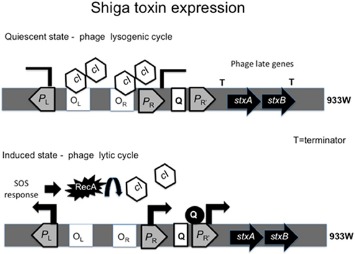Toxins
Double-fluorescence experiments and confocal microscopy then documented the effect of wortmannin on Pet-induced harm to the actin cytoskeleton. Actin stress fibers have been clearly current within the untreated management cells (Fig. 2A) and in cells uncovered to only wortmannin (Fig. 2B). In contrast, actin stress fibers have been absent from Pet-treated cells incubated in the absence of wortmannin (Fig. 2C and D).

Overall, bacterial toxins are fairly opportunistic in how they achieve entry to cells, and discovering one or a mixture of appropriate inhibitors to forestall the uptake of those toxins may prove challenging. The two-part mechanism of motion of AB toxins is of particular interest in cancer therapy analysis. The basic concept is to change the B element of current toxins to selectively bind to malignant cells.
Detailed Learning Goals
Edible crops remodeled with genes encoding the desired adjuvant and antigen fusion protein present an ideal route. The expression of varied vaccine combos linked genetically to LTB as an adjuvant have been synthesized in edible crops, together with potatoes, carrots, lettuce, rice, and corn . These plant production and supply vehicles might present an optimum route for exploiting the adjuvant potential of bacterial enterotoxins. The heterodimeric CTA protein subunit consists of two polypeptide chains, CTA1 and CTA2 , linked by a single disulfide bond. The enzymatically active CTA1 peptide is the mono-ADP-ribosyltransferase subunit, whereas the CTA2 helical peptide hyperlinks the CTA1 subunit to the pentameric CTB subunits. The cholera toxin B subunit (10.6 kDa) consists of 5 identical polypeptide subunit chains , every with membrane receptor GM1ganglioside binding capability.
- Golgicide A, for instance, was isolated in a high-throughput display for ST1 inhibitors and has been used to review toxin biology and the cell biology of vesicular transport .
- 3.Low pH-induced conformational modifications of the toxin induce insertion into the vesicle membrane and allow the translocation of a part of the toxin throughout the vesicle membrane.
- This is of great interest in muscle hyperactivation problems.
Zhang S., Finkelstein A., Collier R.J. Evidence that translocation of anthrax toxin’s deadly issue is initiated by entry of its N terminus into the protecting antigen channel. Ohmura M., Yamamoto M., Tomiyama-Miyaji C., Yuki Y., Takeda Y., Kiyono H. Nontoxic Shiga toxin derivatives from Escherichia coli possess adjuvant activity for the augmentation of antigen-specific immune responses by way of dendritic cell activation. Domingos M.O., Andrade R.G., Barbaro K.C., Borges M.M., Lewis D.J., New R.R. Influence of the A and B subunits of cholera toxin and Escherichia coli toxin on TNF-alpha release from macrophages. Karlsson K.A., Teneberg S., Angstrom J., Kjellberg A., Hirst T.R., Berstrom J., Miller-Podraza H. Unexpected carbohydrate cross-binding by Escherichia coli warmth-labile enterotoxin.